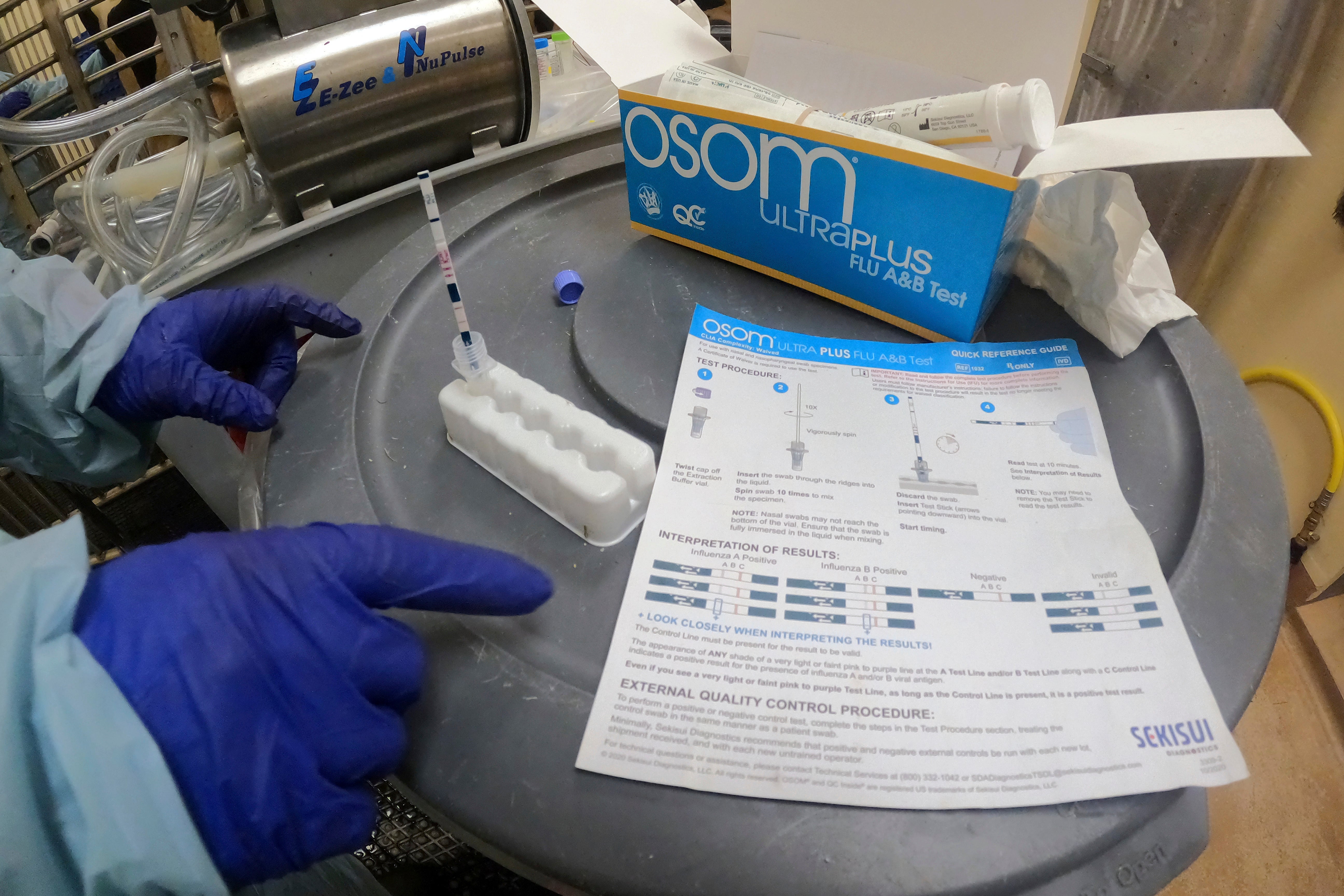As concerns about outbreaks of bird flu and the nation’s response continue to grow, the U.S. reported its first death from the virus on Monday.
The individual was over the age of 65, Louisiana health officials said, and had underlying medical conditions. They had contracted the illness after exposure to wild birds and a non-commercial backyard flock. The case marked the nation’s first severe illness from the virus, which had likely mutated inside the patient. However, there has not yet been human-to-human transmission of H5N1.
The announcement comes after the Biden administration said Friday that it would ramp up spending to support efforts to monitor and tackle the spread of bird flu.
There are currently 66 confirmed human cases reported across 10 states, with the majority reported in California and Colorado.
Now more than $300 million will go toward monitoring H5N1 bird flu and regional, state, and local preparedness programs. About a third is allocated for testing, outreach to high-risk populations, and increased surveillance of individuals who have been exposed to infected animals. And, $90 million is being awarded to the Hospital Preparedness Program, which is “the only source of federal funding for health care system readiness.”
“While the risk to humans remains low, we are always preparing for any possible scenario that could arise. These investments are critical to continuing our disease surveillance, laboratory testing, and monitoring efforts alongside our partners at USDA,” Secretary Xavier Becerra said in a statement. “Preparedness is the key to keeping Americans healthy and our country safe. We will continue to ensure our response is strong, well-equipped, and ready for whatever is needed.”
The move, which is aimed at protecting human and animal health and food safety, comes after health officials said Thursday that available treatments and vaccines, as well as those in development, are sufficient to prevent severe disease from bird flu -- though assuring the National Institutes of Health and its federal partners remain focused on monitoring the virus and evaluating changes.
The National Institute of Allergy and Infectious Diseases leaders stressed that timely collaboration among investigators, vigilant disease surveillance to identify and assess viral changes to evaluate the risk for person-to-person transmission, continued development and testing of medical countermeasures including vaccines, and advising people to take precautions to prevent exposure to the virus are all crucial going forward to “help scientists and public health officials investigating HPAI H5N1 to answer the many remaining questions more quickly about how the virus is spreading, evolving, and affecting people, other mammals, and birds.”
Still, the spread of the virus among animals on farms and in the wild has been a challenge for authorities, with hundreds of cattle herds infected in 16 states and more than 17 million birds in commercial and backyard flocks affected. The virus has resulted in an egg shortage, as exposed birds have been slaughtered.
Bird flu has also been found in pigs, migratory birds, and West Coast cats that drank raw milk and ate recalled pet food. Infections have forced governors in California and Iowa to issue disaster proclamations. More than 70 percent of California’s herds are infected.

The majority of human cases have been mild, and in people directly exposed to these animals.
Of the cases reported in the Western Pacific Region from January 2003 through this past September, the World Health Organization says there was a case fatality rate of 54 percent.

Several probable human cases in California, Washington, Arizona, and Delaware have also been reported by the Centers for Disease Control and Prevention.
In response, the government has also begun testing raw milk and cheese products made with raw milk. Raw milk products are not pasteurized, a heating process that kills bacteria and viruses such as bird flu. Unpasteurized cheeses and other products made using raw milk are seen as “high-risk” by the Food and Drug Administration.







